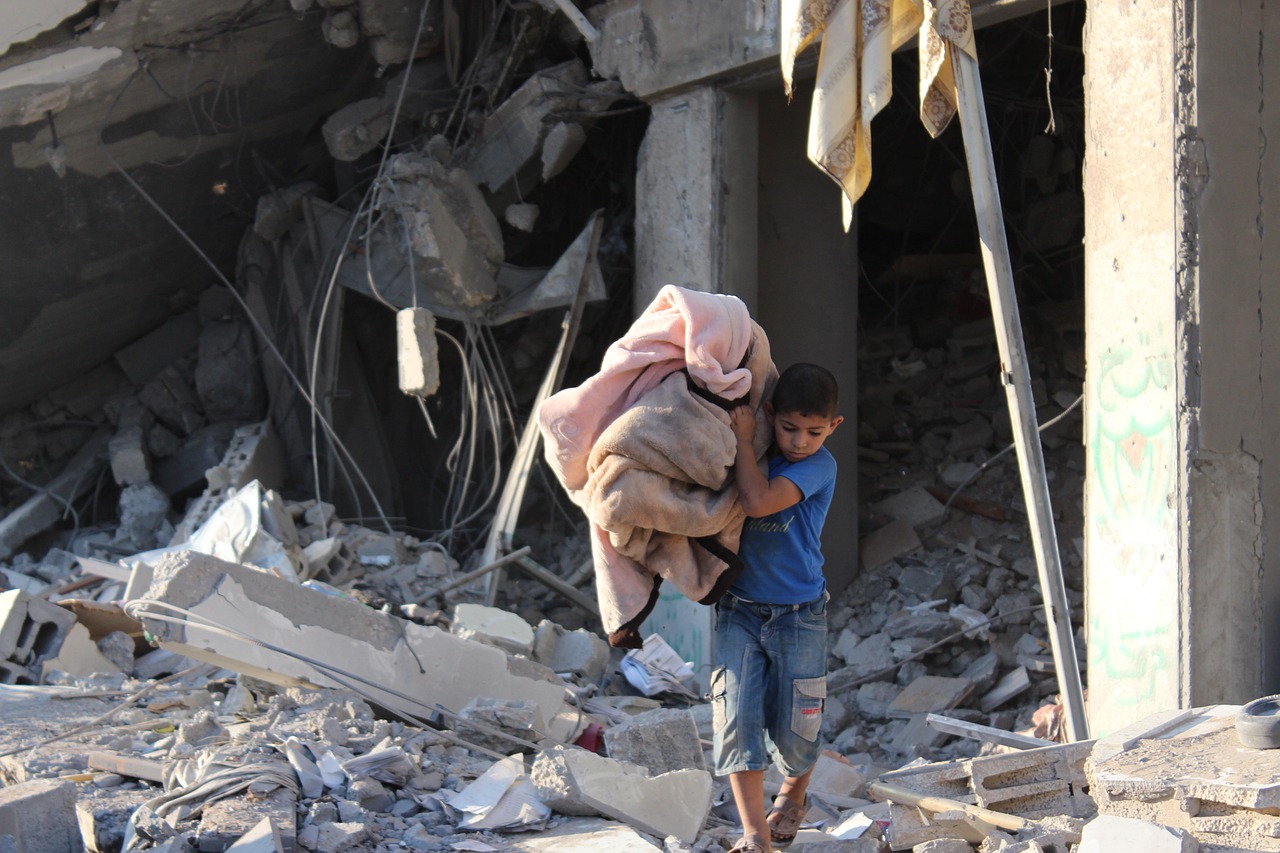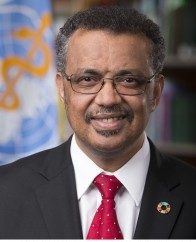
By Dr Tedros Adhanom Ghebreyesus*
More than 10,800 people have now been killed in the Gaza Strip, and on average, a child is killed every 10 minutes there. Almost 70% of those killed are women and children. 1.5 million people have been displaced, and are looking for shelter anywhere they can find it. But nowhere and no one is safe.
I understand what the children of the Gaza Strip must be going through because as a child, I went through the same thing. The sound of gunfire and shells whistling through the air; the smell of smoke after they struck; tracer bullets in the night sky; the fear; the pain; the loss – these things have stayed with me throughout my life. When my mother heard gunfire at night, she would make us sleep under the bed, with more mattresses on top of the bed, in the hope we might be protected if a shell fell on our house.
I also understand what the parents of the Gaza Strip are going through, because in 1998, when war returned to Ethiopia, my children had to hide in a bunker to shelter from the bombardment. I experienced war both as a child and as a parent.
The children and parents of the Gaza Strip and Israel want and need the same thing that my family wanted and needed: peace and security.
Let me be clear from the outset that I fully understand the anger, grief and fear of the Israeli people following the horrific, barbaric and unjustifiable attacks by Hamas and other armed groups on Israeli civilians on the 7th of October. The killing of 1,400 people, and injuries to more than 7,200 others, is bad enough. For the survivors and families of victims, the mental health consequences will endure for a long time to come. WHO The World Health Organization] is gravely concerned for the health and well-being of Israeli hostages in Gaza, many of whom are older people, children and those with urgent medical needs. Two weeks ago, I spoke with the families of hostages, and I will meet them in Geneva next week. I feel their heartache and fear.
I also understand the anger, grief and fear of the people of the Gaza Strip, who had already suffered through 16 years of blockade and are now enduring the destruction of their families, their homes, their communities and the life they knew. The situation on the ground is impossible to describe. Hospital corridors crammed with the injured, the sick, the dying; Morgues overflowing; Surgery without anaesthesia; Tens of thousands of displaced people sheltering at hospitals; Families crammed into overcrowded schools, desperate for food and water.
As more and more people move to smaller and smaller spaces, overcrowding is increasing the risks of outbreaks of diarrheal and respiratory disease, and skin infections.
WHO is on the ground in Gaza, alongside our partners, to support health workers, who are physically and mentally exhausted and are doing their best in unimaginable conditions. In addition to caring for the 27 thousand people who are wounded, many of them with life-threatening injuries, they are trying to manage the regular health needs of more than 2 million people.
More than 180 women give birth in Gaza every day. There are 9 thousand patients on cancer therapy. And there are 350 thousand patients with diabetes, heart disease and hypertension.
I visited the Al-Shifa Hospital in Gaza in 2018. I toured a dialysis ward and a neonatal intensive care unit and spoke with health workers and patients. Even then, conditions were extremely difficult for health workers. Now their work is impossible, and they are directly in the firing line.
Since the 7th of October, WHO has verified more than 250 attacks on health care in Gaza and the West Bank, in addition to 25 attacks on health care in Israel – hospitals, clinics, patients, ambulances. Last week, WHO documented 5 attacks on 5 hospitals in one day. In the past 48 hours alone, four hospitals have been put out of action, representing some 430 beds. More than 100 of our UN colleagues have been killed. And as we speak, there are reports of firing outside the Al-Shifa and Rantisi hospitals.
Half of the Gaza Strip’s 36 hospitals and two-thirds of its primary health care centres are not functioning at all. Those that are functioning are operating way beyond their capacities. The health system is on its knees, and yet somehow is continuing to deliver lifesaving care. The best way to support those health workers and the people they serve is by giving them the tools they need to deliver that care – medicines, medical equipment and fuel for hospital generators.
Field hospitals and emergency medical teams can complement and support existing hospitals and health workers in Gaza, but they cannot replace them.
Supporting Gaza’s health workers is at the heart of WHO’s operational response plan. WHO was part of the first convoy of aid to enter Gaza through the Rafah crossing on the 21st of October, and since then we have delivered 63 metric tonnes of specialist medical equipment and supplies that health workers need to save lives, including to hospitals north of Wadi Gaza.
But this doesn’t even begin to address the scale of need. Before the 7th of October, an average of 500 trucks a day were crossing into Gaza with essential supplies. Since the 21st of October, instead of the expected 10,000 trucks, just 650 have entered.
A month ago, just two days after the violence started, I met with His Excellency President Abdel Fattah El-Sisi of Egypt, who agreed to support WHO and our partners to deliver aid through the Rafah crossing. I thank Egypt for its support in getting aid into Gaza, and for establishing a medivac pathway to get the most critically sick and wounded patients out, including 12 children with cancer who are being transferred for treatment in Egypt and Jordan.
WHO continues to call for unfettered access to deliver humanitarian aid to the civilians of Gaza, who are not responsible for this violence, but are suffering in ways that we in this room cannot imagine. We continue to call on Hamas to release the hostages it took, many of whom need urgent medical attention. We continue to call on Israel to restore supplies of electricity, water and fuel. We continue to call on both sides to abide by their obligations under international humanitarian law. And we continue to call for a ceasefire, to prevent further deaths of civilians and further damage to Gaza’s hospitals and health facilities.
This crisis underlines once again the need for reform of the Security Council. It has long been my view that the Security Council no longer serves the purpose for which it was established. It represents the realpolitik of the Second World War, not the 21st century.
As a Foreign Minister (of Ethiopia), I was part of a group working on reform of the Security Council. I am dismayed that no progress has been made. To remain credible, relevant, and a force for peace in our world, Member States, especially the P5, must take seriously the need to reform the Security Council.
*Edited excerpts of WHO Director-General’s remarks at the Emergency Meeting of the United Nations Security Council on the situation in Israel and the occupied Palestinian territory on November 10, 2023.






